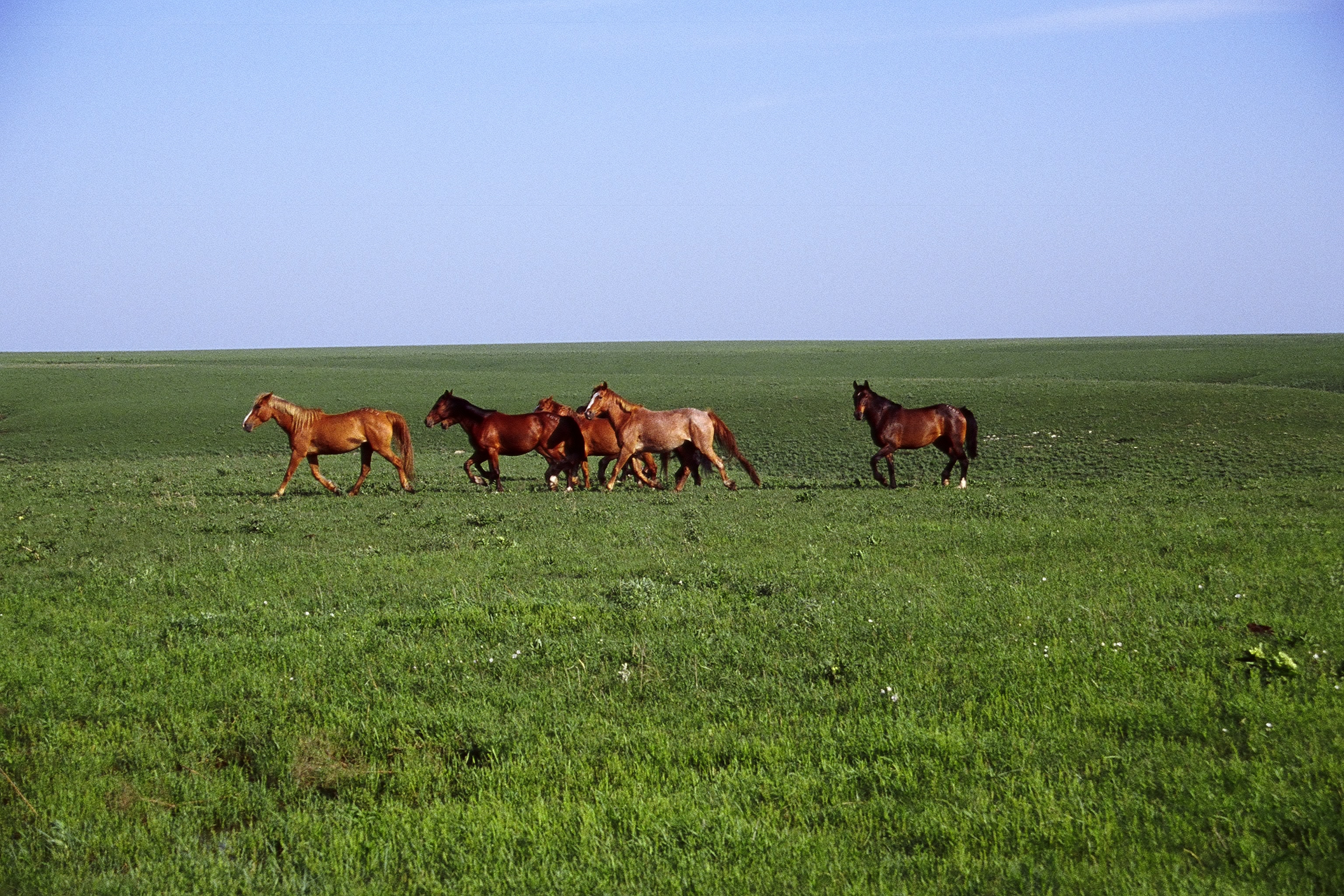The BLM envisions the establishment of both federal and partner-owned preserves — places where the forage is rich — where unadopted wild horses can roam as freely as possible. The preserves could possibly be located in the productive grasslands and plains of America’s Midwest, where wild horses once flourished. Preserves are an important element in attaining a sustainable Wild Horse and Burro Program.
The BLM’s long-term goal is to eventually limit gathers to the number of horses (or burros) that can be adopted or sold. By matching the number of animals removed with the number that can be adopted in a given year, the need for preserves to humanely care for unadopted animals will be reduced over time.
| Partnerships, including partner-owned preserves, are one way the BLM hopes to engage Americans in the protection and management of these iconic animals and reduce costs. |
|
Goal: Provide for sustainable long-term care of wild horses and burros in a free-roaming environment working collaboratively with our existing partners; develop new partnerships; and create educational and research opportunities and public access, while reducing costs of care within the next 10 years through an incentive-based approach that will provide local economic development opportunities.
Objective 1: Manage every preserve in a manner that maintains non-reproducing wild horses and burros in pastures large enough to allow free-roaming behavior while providing the food, water, and shelter necessary to sustain them in good condition.
Actions:
Utilize animal welfare and care requirements in existing long-term pasture contracts to assure the health and well being of the animals located in preserves.
Minimize the handling of wild horses and burros by humans to the greatest extent possible.
Utilize standard protocols and criteria for long-term pasture contracts to provide regular, on the ground monitoring of the wild horses and burros in preserves in order to ascertain their well being and safety.
Manage preserves with individuals who are knowledgeable and experienced about the behavior and nutritional requirements of equines and the management of land for the sustained production of grass and other desirable forage plants.
Objective 2: Increase the stability of long-term holding contracts.
Action:
Seek authority to extend the contract period from a maximum of 5 years to 10 years to provide greater stability/assurance of pasture availability, and continue to solicit (contract) for long-term grassland pastures for a minimum of 200 and a maximum of 5,000 wild horses.
Objective 3: Acquire preserves through acquisition of non-federal land.
Actions:
Acquire non-federal land (“fee-title” or full ownership) preserves through purchase, exchange, or donation. Consider less-than-fee title acquisition, if necessary.
Develop a communications and outreach strategy to identify potential properties.
Objective 4: Work with partners to establish preserve(s) on existing private land.
Actions:
Seek authority to extend assistance agreements with Tribes or non-profit organizations, from a maximum of 5 years to 10 years.
Seek partnerships with existing animal sanctuaries/preserves for the placement of wild horses.
Open a dialogue with potential partners: land trust and open space organizations, conservation and sportsman groups, private forestry corporations, state or local open space areas, Native American tribes, and others.
Explore transfer of animal title to the partner.
Objective 5: Create preserves on other federal agency lands.
Actions:
Identify existing non-BLM federal lands which could be suitable for preserve establishment.
Develop an Interagency Agreement for preserve creation and joint management of the land and animals.
Consider modeling the partnership after the U.S. Department’s of Agriculture (USDA) and the Interior Service First program.
Objective 6: Create a program for management of wild horses and burros by private citizens who would be reimbursed for their care through the USDA Farm Service Agency (FSA).
Actions:
Explore existing USDA private land conservation programs (i.e., Grassland Reserve Program) as a possible mechanism to provide incentives to farmers and ranchers who care for a minimum of 200 up to a maximum of 5,000 wild horses and burros on their private lands.
If necessary, seek new authorities to create a new private land conservation program; facilitate and manage the program consistent with the authority provided.
Objective 7: Create preserves on HAs or HMAs which currently have no animals on them.
Actions:
Identify any HMAs which currently have no animals; re-evaluate the landscape to determine if wild horses or burros could be reintroduced; if so, identify a proposed AML.
Re-evaluate areas of HAs not currently designated as HMAs, to determine if on-the-ground conditions would support an HMA designation; if so, determine a proposed AML.
As part of the evaluation process, determine if the HMA or HA is best suited to the management of reproducing or non-reproducing wild horses, or conversion to burros.
Amend land use plans and conduct additional site-specific environmental analysis, as appropriate.
Evaluate resource monitoring data to adjust AML as needed.
Objective 8: Develop collaborative partnerships; establish and manage at a least one preserve with the primary focus of education and scientific research and development; assure opportunities for public access and learning.
Actions:
Develop a needs assessment to identify potential areas for partnering.
Develop a strategy to expand partnership opportunities that includes training, grants, tax incentives, emphasizing opportunities for tourism and developing some privately owned, economically self-sustaining preserves.
On at least one acquired preserve, develop public viewing areas, visitor center, kiosks, and other venues to manage, communicate, and share the new preserve and the animals with the local community and tourists.
Partner with wildlife and parks departments and others throughout the United States to provide educational viewing and tourism opportunities.
